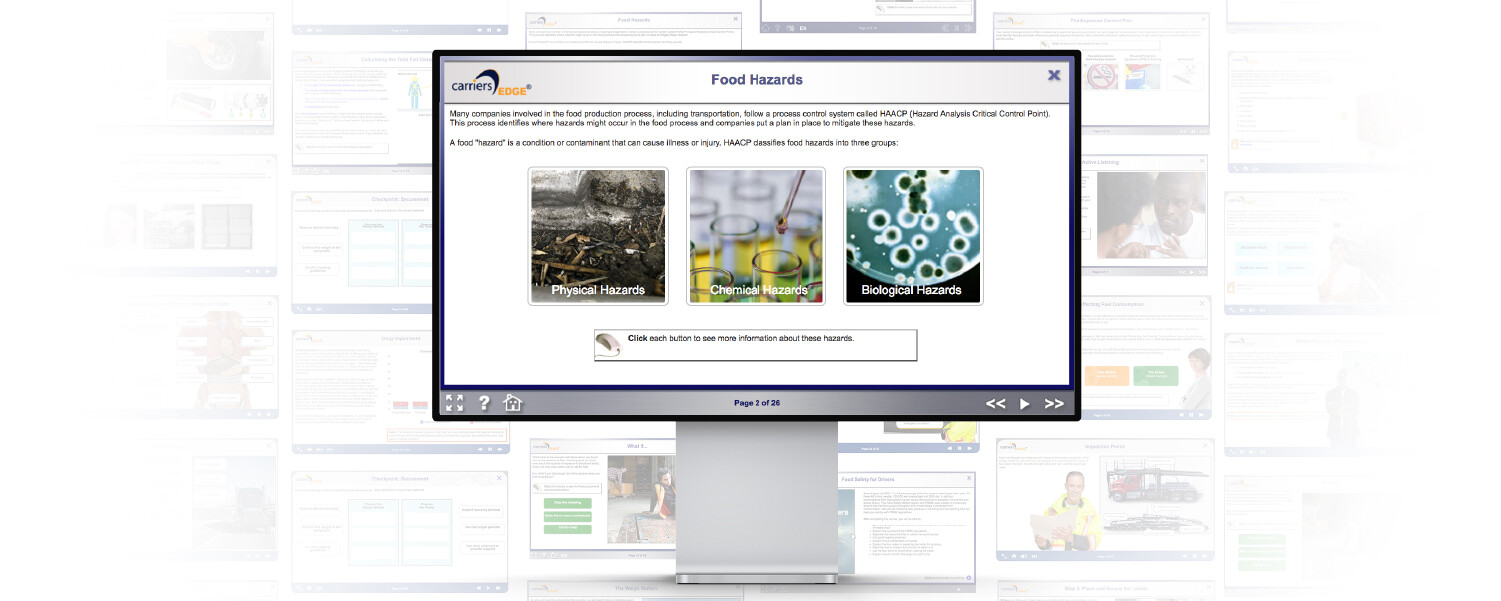
CarriersEdge Addresses Food Safety Training
Markham, Ontario, February 2, 2017 - CarriersEdge, providers of online safety and compliance training tools for the North American transportation industry, today announced Food Safety for Drivers, a training module for preparing drivers to meet the requirements of the Food Safety Modernization Act (FSMA).
"Food Safety for Drivers prepares drivers for transporting food in accordance with FSMA regulations," said Jane Jazrawy, CEO of CarriersEdge. "Along with importers, manufacturers, shippers and carriers, drivers have an important role to play in the safe transportation of food. This new course focuses on FSMA regulations and best practices to help drivers prevent food contamination."
Food Safety for Drivers is a 30-minute module that uses images, interactivity and real life examples to cover what drivers need to know about preparing themselves and their trailers for transporting food in accordance with FSMA regulations. The module includes quizzes and a final test, which carriers can use to maintain food safety training records.
After completing the module, drivers will be able to describe hazards that cause food contamination and how food borne illnesses occur, explain the purpose of the FSMA regulations, describe their responsibilities in safely transporting food, list good hygiene practices, explain how a refrigeration unit works and how to prepare, inspect, pre-cool and load a trailer as well as monitoring cargo. Topics covered in the Food Safety for Drivers course include:
- Good Hygiene Practices, including wearing appropriate clothing, covering skin abrasions, proper hand sanitation, how to cough and sneeze properly and activities to avoid
- Preparing the Trailer, including checking the trailer's condition, with special consideration for items such as the air delivery chute, doors, as well as signs of rodent or insect infestation, cleaning the trailer, inspecting the refrigeration unit and correct pre-cooling procedures
- Loading the Trailer, including temperature management, packaging, placement, and segregation of cargo, as well as allowing for sufficient airflow, and documentation